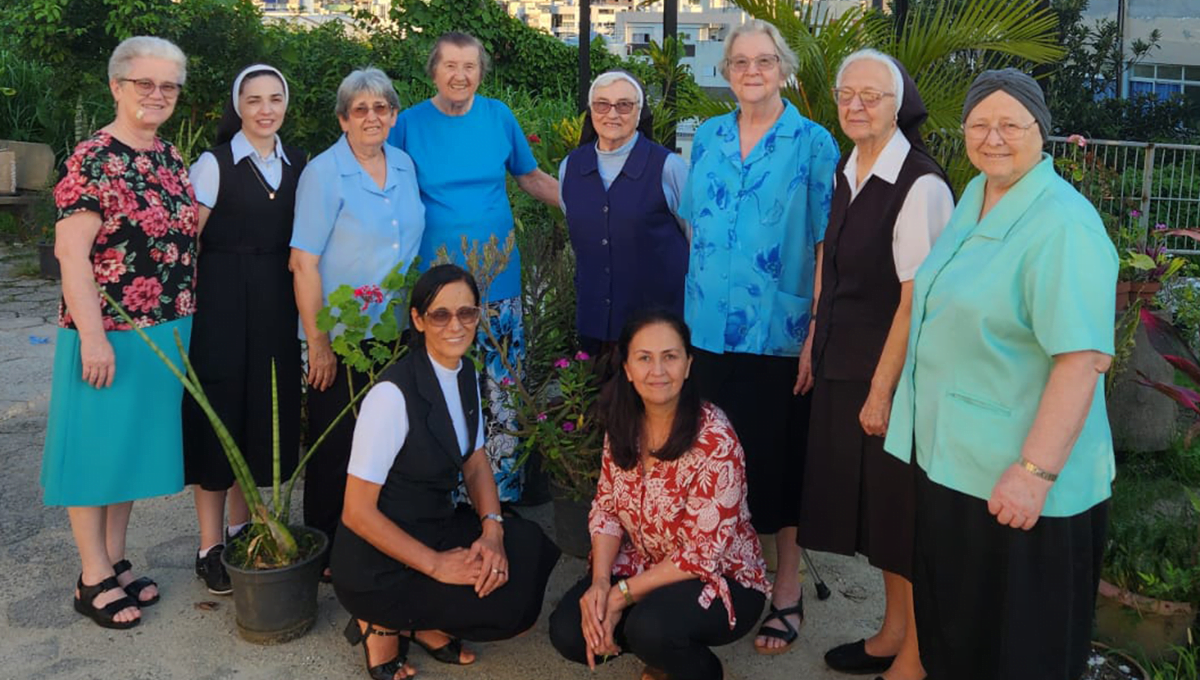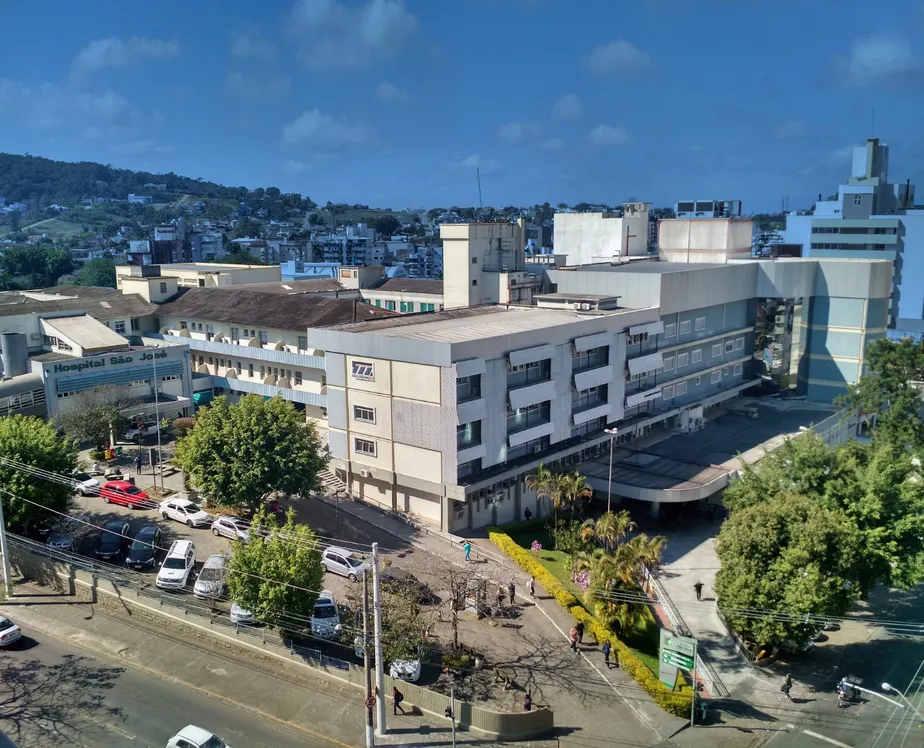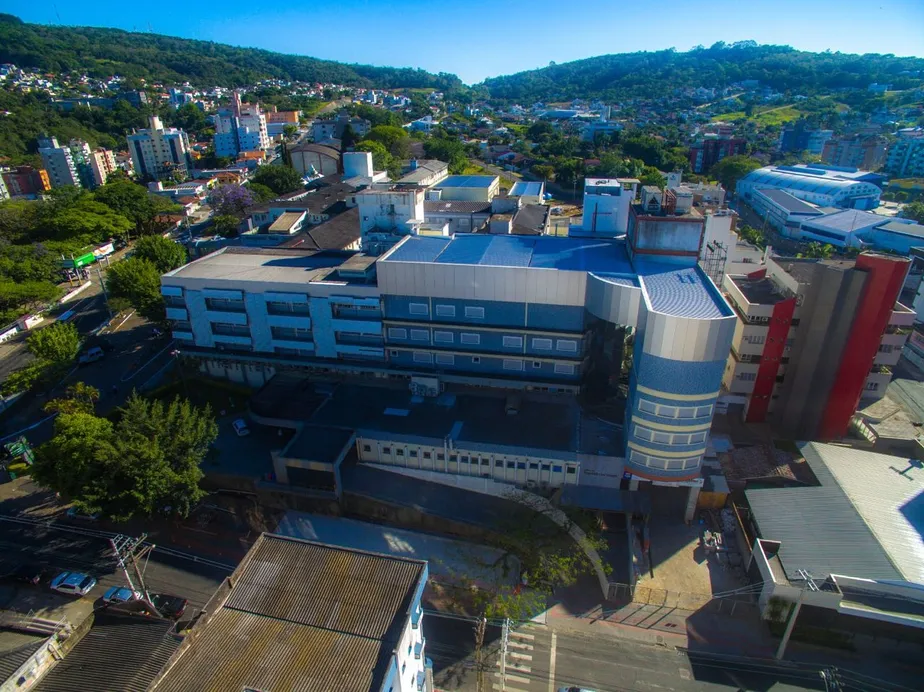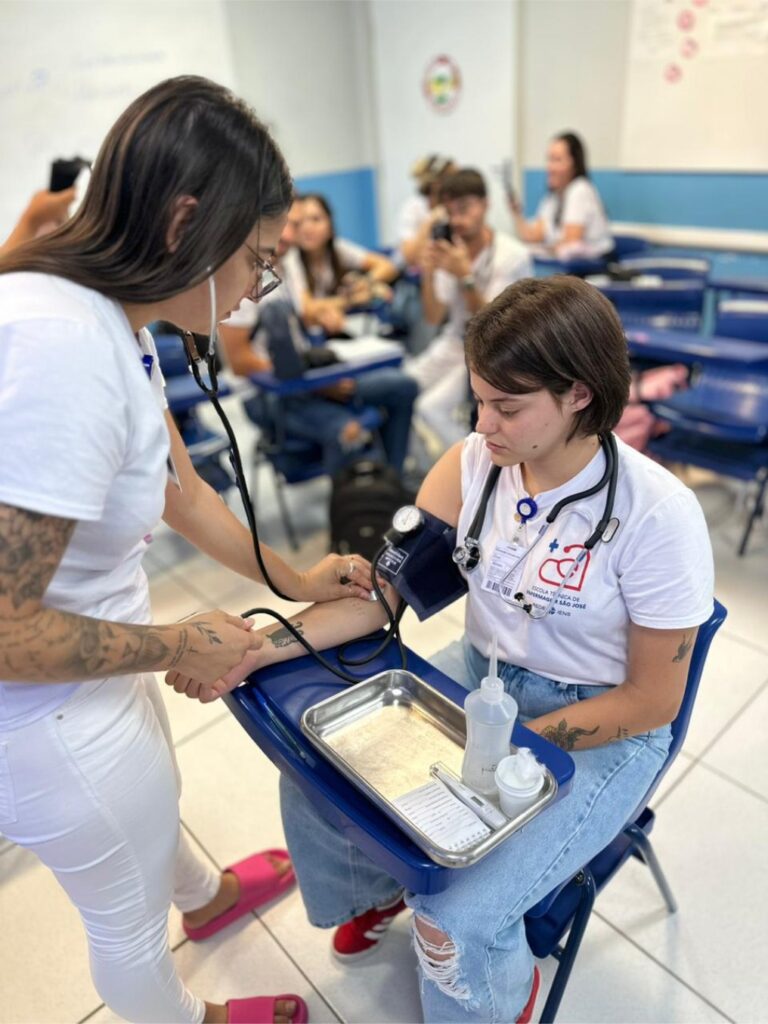Hospital São José, a philanthropic hospital located in Criciúma, Santa Catarina, and run by the School Sisters of Our Lady (IENS), is a landmark of dedication and service with 88 years of history. Officially founded on November 8, 1936, it stands out as an essential pillar in health care in the southern region of Brazil. The School Sisters, originally invited to the country to focus on education at the request of the bishop of Florianópolis, accepted the challenge of running a health unit in Criciúma a year after their arrival, marking the beginning of an extraordinary journey in health and education.
From the beginning, when the local economy was mainly driven by mining and the first patients were mostly miners from the region. Hospital São José has evolved to serve a wide range of audiences and specialties throughout the southern region of Santa Catarina. With a team of around 1,650 dedicated professionals and a clinical staff of 350 specialists, the hospital prides itself on offering excellent medical and hospital care, accredited by ONA at level 3.
The institution stands out not only for its quality care, but also for being a teaching center, training the next generation of health professionals. As a teaching hospital, São José welcomes resident doctors, medical and nursing students, among others, promoting education that is integrated with the community's health.




Specializing in highly complex Cardiology, Oncology, Orthopedics, Neurology and Infectious Diseases, Hospital São José is recognized as a regional reference, playing a crucial role in health care and treatment in the south of the country. In addition to its significant contribution to the health of the population, the hospital also excels in training qualified health professionals, thus contributing to the advancement of the health sector in the region.
Hospital São José is a true center of excellence, combining medical knowledge, advanced technology and humanized care to provide the best possible treatment for patients.
This hospital complex, São José, is home to a clinical research center, where health professionals, in addition to curing cancer, seek new discoveries that promote prevention and test new drugs to cure cancer, among other things.
With its unwavering commitment to caring for the population and to education, Criciúma's São José Hospital continues to be an example of dedication and love for others, sustained by the values and mission of the School Sisters of Notre Dame. It's not just a hospital; it's a place where compassion, care and education come together to improve the lives of countless people every day.





Inaugurated in 1995, the São José Health Plan emerged as an extension of Hospital São José's commitment to providing exceptional health care to the residents of southern Santa Catarina. Initially created to support the hospital's medical services and high-complexity procedures, the health plan quickly expanded its operations, firmly establishing itself in the healthcare market.
Today, the São José Health Plan stands out for its high-quality network of accredited members, covering a wide range of health services. The operator not only offers access to one of the main hospitals in the region, but also to a wide network of specialists and services, guaranteeing its clients comprehensive care and excellence.
One of the main distinguishing features of the São José Health Plan is its commitment to health promotion and the prevention of risks and illnesses. Through specific programs, the operator aims not only to treat existing health conditions, but also to work actively to prevent future health problems, reinforcing its commitment to its clients' well-being.
With a history marked by innovation and quality, the São José Health Plan continues to be a reliable choice for those seeking security and excellence in health services in southern Santa Catarina.
The São José Health School, part of the São José Hospital in Criciúma, is a renowned center for training nursing technicians. Its location allows students to be directly immersed in an active clinical environment, accessing practical experiences and learning from health professionals. This aspect stands out as a differential in the educational process, preparing students in a unique way for the job market.
The curriculum is designed to equip students with crucial skills in patient care, technical procedures, medication administration and interdisciplinary collaboration, paving the way for jobs in a variety of healthcare settings, including hospitals, clinics and home care.
Contributing to the health sector with qualified professionals ready for the contemporary challenges of nursing, the Escola de Saúde São José has established itself as a benchmark institution in the region for its integrated and practical educational approach.

School Sisters
We firmly believe that the internet should be available and accessible to anyone, and are committed to providing a website that is accessible to the widest possible audience, regardless of circumstance and ability.
To fulfill this, we aim to adhere as strictly as possible to the World Wide Web Consortium's (W3C) Web Content Accessibility Guidelines 2.1 (WCAG 2.1) at the AA level. These guidelines explain how to make web content accessible to people with a wide array of disabilities. Complying with those guidelines helps us ensure that the website is accessible to all people: blind people, people with motor impairments, visual impairment, cognitive disabilities, and more.
This website uses various technologies that are meant to make it as accessible as possible at all times. We utilize an accessibility interface that allows persons with specific disabilities to adjust the website's UI (user interface) and design it to their personal needs.
Additionally, the website utilizes an AI-based application that runs in the background and optimizes its accessibility level constantly. This application remediates the website's HTML, adapts Its functionality and behavior for screen-readers used by the blind users, and for keyboard functions used by individuals with motor impairments.
If you've found a malfunction or have ideas for improvement, we'll be happy to hear from you. You can reach out to the website's operators by using the following email
Our website implements the ARIA attributes (Accessible Rich Internet Applications) technique, alongside various different behavioral changes, to ensure blind users visiting with screen-readers are able to read, comprehend, and enjoy the website's functions. As soon as a user with a screen-reader enters your site, they immediately receive a prompt to enter the Screen-Reader Profile so they can browse and operate your site effectively. Here's how our website covers some of the most important screen-reader requirements, alongside console screenshots of code examples:
Screen-reader optimization: we run a background process that learns the website's components from top to bottom, to ensure ongoing compliance even when updating the website. In this process, we provide screen-readers with meaningful data using the ARIA set of attributes. For example, we provide accurate form labels; descriptions for actionable icons (social media icons, search icons, cart icons, etc.); validation guidance for form inputs; element roles such as buttons, menus, modal dialogues (popups), and others. Additionally, the background process scans all of the website's images and provides an accurate and meaningful image-object-recognition-based description as an ALT (alternate text) tag for images that are not described. It will also extract texts that are embedded within the image, using an OCR (optical character recognition) technology. To turn on screen-reader adjustments at any time, users need only to press the Alt+1 keyboard combination. Screen-reader users also get automatic announcements to turn the Screen-reader mode on as soon as they enter the website.
These adjustments are compatible with all popular screen readers, including JAWS and NVDA.
Keyboard navigation optimization: The background process also adjusts the website's HTML, and adds various behaviors using JavaScript code to make the website operable by the keyboard. This includes the ability to navigate the website using the Tab and Shift+Tab keys, operate dropdowns with the arrow keys, close them with Esc, trigger buttons and links using the Enter key, navigate between radio and checkbox elements using the arrow keys, and fill them in with the Spacebar or Enter key.Additionally, keyboard users will find quick-navigation and content-skip menus, available at any time by clicking Alt+1, or as the first elements of the site while navigating with the keyboard. The background process also handles triggered popups by moving the keyboard focus towards them as soon as they appear, and not allow the focus drift outside of it.
Users can also use shortcuts such as "M" (menus), "H" (headings), "F" (forms), "B" (buttons), and "G" (graphics) to jump to specific elements.
We aim to support the widest array of browsers and assistive technologies as possible, so our users can choose the best fitting tools for them, with as few limitations as possible. Therefore, we have worked very hard to be able to support all major systems that comprise over 95% of the user market share including Google Chrome, Mozilla Firefox, Apple Safari, Opera and Microsoft Edge, JAWS and NVDA (screen readers), both for Windows and for MAC users.
Despite our very best efforts to allow anybody to adjust the website to their needs, there may still be pages or sections that are not fully accessible, are in the process of becoming accessible, or are lacking an adequate technological solution to make them accessible. Still, we are continually improving our accessibility, adding, updating and improving its options and features, and developing and adopting new technologies. All this is meant to reach the optimal level of accessibility, following technological advancements. For any assistance, please reach out to